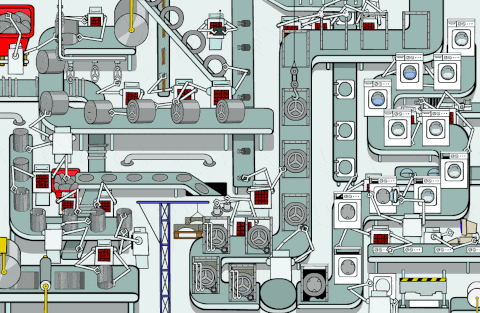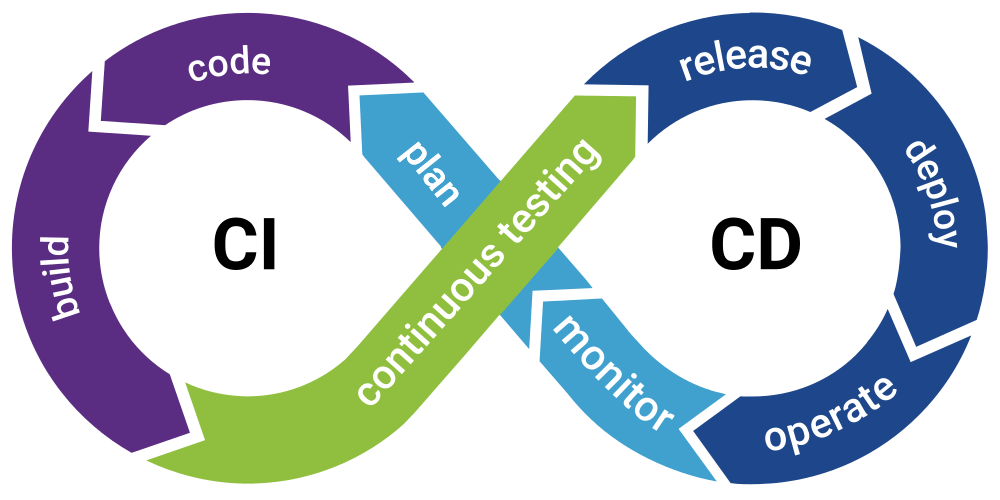Understanding CI/CD
Automation is everywhere and lies at the center of DevOps also it is pretty easy to grasp once you understand the fundamentals.
Introduction
We all have seen in the infotainment shows, various machines, designed to do a particular kind of work are used in large factories to fulfill the demanded speed and quality in the production that humans cannot deliver. It is called automation.

Well in software development with the ever-increasing number of functionalities that applications today are bestowed with, there is also an ever-increasing possibility of bugs and issues going unnoticed. Manual testing is not an option in the highly competitive market, where even a small bug can become result in a huge loss.
Automation testing, on the other hand, involves testing software applications using scripts and tools instead. Automation Testing is at the core of any CI/CD pipeline.
What is CI/CD?
CI and CD are two abbreviations that stand for Continuous Integration and Continuous Delivery/Continuous Deployment.
CI/CD is the backbone of a DevOps methodology.
It plays a key role in managing the quality and security of software products by ensuring that code is delivered at the right time, independently of any changes to requirements.
The software development lifecycle (SDLC) is broken down into stages of design, coding, and testing.
We can find the requirement of Continuous Integration & Continuous Deployment skills in various job roles such as Data Engineer, Cloud Architect, Data Scientist, etc.
CI/CD bridges the gap between development and operations teams by automating the build, test, and deployment of applications.
Continuous Integration (CI)
Continuous Integration describes the process involving the developer making changes in the code and checking it. CI helps in streamlining code changes. It is a part of DevOps in which the build and release process occurs without a default build or branch,
The entire source code undergoes integration tests. It helps you to do multiple stages of work on code like fetching code from version control, building it, running tests, and then deploying it to production.
Continuous Delivery/Deployment (CD)
Continuous Delivery describes the process of the new product version to environments like testing and development. Here the deployment is done manually by the developer.
Continuous Deployment means that software is constantly built and tested — usually in a continuous manner as well as at regular intervals. it allows developers to verify that their application works properly on various systems in parallel. With Continuous Deployment, the whole process is automated reducing human interaction to a much lesser degree.
What is CI/CD Pipeline?
CI/CD pipeline automates the software delivery process, from building code to running tests and further deploying a new version of the software. It is the implementation of Continuous Integration/Continuous Deployment in your software.
A pipeline is an automated process that drives software development through a path of building, testing, and deploying code, also known as CI/CD.
By automating the process, the goal is to minimize human error and maintain a consistent process.
Tools included in the pipeline typically include features such as code authoring, unit testing, code analysis, security, and building binaries.
Tools that are included in the pipeline could include compiling code, unit tests, code analysis, security, and binaries creation.
The stages of the CI/CD Pipeline
- Source Stage
In the source stage, CI/CD pipeline is triggered by a change in the program. The CI/CD pipeline has to be triggered to initiate the process, this can be done automatically with the code change and can also be triggered manually.
- Build Stage
This is the second stage of the CI/CD Pipeline in which you merge the source code and its dependencies. It is done mainly to build a runnable instance of software that you can potentially ship to the end user.
- Test Stage
This is the third stage. Here, we'll be running automated tests to confirm the software's functioning. the execution of automated tests confirms the correctness of the code and the behavior of the software.
This testing helps to deliver bug-free software to the end-user, to ensure this. It is the developer's responsibility to design these tests, the tests vary on the basis of the scale and complexity of the project.
- Deploy Stage
Once the build has successfully passed through all the required test scenarios, it is ready to deploy to the live server. The deployment stage is where the code is ready to be deployed
Tools
Right now, the market offers multiple solutions to automate CI/CD processes, some of the most popular ones are:
- Jenkins
Jenkins is an open-source automation server in which the central build and continuous integration process take place. It is a self-contained Java-based program with packages for Windows, macOS, and other Unix-like operating systems. With hundreds of plugins available, Jenkins supports building, deploying, and automating software development projects.
- Travis CI
TravisCI is a time-proven CI solution that fits open-source projects best. This continuous integration tool offers a wide range of options for CI automation.
Advantages of CI/CD
Here are the advantages/benefits of the CI/CD pipeline:
Builds and testing can be easily performed.
It improves the efficiency and quality of code.
It streamlines communication.
It can automate the process of software delivery.
Helps you to achieve faster customer feedback.
makes the software development cycle faster.
Helps to solve merge conflicts.
Improves communications between maintainers and contributors.
Conclusion
CI/CD is an amazing concept by itself, you have to write a few lines of code and let the algorithm handle the task of testing and deploying while you can focus on more creative tasks like designing and scaling up the project.
If you have read so far then, congratulations you have just covered the basics of CI/CD processes. If you have any questions or suggestions, please leave your comments down below. Thanks for reading!

